What to do if the floorboard creaks: an overview of the causes and methods of solving the problem
Wood is a natural material; it is able to deform under the influence of external factors (in particular, atmospheric vibrations). Therefore, if a parquet board creaks, this means only one thing - some elements of the coating are movable and rub against each other. This is how a “marvelous song” arises, capable of infuriating even the most balanced homeowner. This sound is like an old toothache or pesky migraine. What are the causes of squeaking, and most importantly, how to eliminate it? Let's try to figure it out.
Content
Why does a parquet board creak?
This may occur due to non-compliance with the correct technology even at the stage of flooring. This may include:
- uneven cement screed (or any other base);
- defective lag or their incorrect location;
- insufficient adhesion of fiberboard to the base;
- errors in the process of laying the board;
- wrong choice of substrate, its poor quality;
- poor parquet glue or bituminous mastic.
The causative agent of "parquet music" may also become drying parquet planks due to:
- “Overdrying” or “under-drying” of the parquet board;
- non-compliance with the temperature and humidity conditions in the premises;
- skipping one of the most important stages of laying the board, namely the flooring of the vapor barrier (film).
The cause of the creak can also be found in your baseboard, or rather in the way it is fixed.
Possible causes of the problem
Of course, eliminate (unless, of course, this sound does not cause you a state of bliss). We will analyze in order all the ways to get rid of a squeak, depending on the reasons that caused this phenomenon.
Base problems
A poor base can provoke peeling of a parquet board, destroy it. If you laid the floor material directly on a cement screed, without any intermediate layers, such as plywood or fiberboard, then sooner or later it will peel off. As a result, the parquet board will be unsecured. This is where the legs of mobility of the slats and, accordingly, of the squeak grow.
There is a solution, and it is one - complete dismantling of the coating and major alteration of the base under the parquet board. But if the quality of the concrete floor itself is doubtful: if it cracked and is on the verge of destruction, then it is recommended to screed with a self-leveling mixture in front of the plywood flooring. By the way, the layer formed by the self-leveling mixture itself is good as a base for parquet floors. The only thing is that you should comply with its recommended thickness.
As for the roughness of the screed, it should not exceed two millimeters per two meters of the surface. Otherwise, the parquet board will begin to collapse and creak.
A separately damaged section of a concrete base under a parquet board can be updated as follows:
- clean it to the very isolation;
- dedust;
- rinse with water;
- fill with a thick cement mortar, smooth, smooth;
- cover the hardened solution with a wet rag;
- maintain the humidity of the site for seven to ten days;
- dry for three weeks.
It helps some!
Loose plywood (fiberboard) to the screed
If you suspect that it is the poor adhesion of plywood to the screed that is the cause of the "heartbreaking aria" that is heard on the entire surface of the floor, then you can’t do without quite obvious drastic measures.
Local creaking can be eliminated in this way:
- it is necessary to remove several parquet boards;
- a hole with a diameter of about ten millimeters should be drilled in the base;
- pour cement-sand mortar prepared in a ratio of 1: 3 into it;
- after 24 hours the operation should be repeated.
Errors in the process of choosing and laying parquet board
As practice shows, the creak of a parquet board quite often provokes a primitive castle system - end latches.
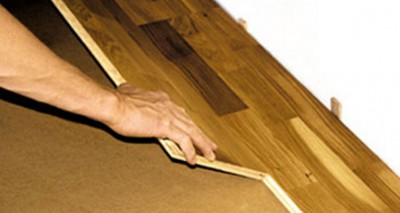
In the process of installing the coating along the assembly line, a decent shift occurs - it is caused by the snapping of those end locks. The canvas moves and as a result, some rows are forced to rest against the wall. So there is a creak.
How to avoid this? Firstly, it is necessary to wedge each of the stacked rows - an adequate technology requires just such an approach. Secondly, when purchasing a parquet board, you should pay attention to the quality of its geometry and the castle system.
Lack of necessary gaps
The parquet board may creak due to its laying too close to the walls, i.e. due to the lack of necessary gaps. When the relative humidity in the room rises, the boards increase in volume and make an unpleasant sound when walking.
Can this be avoided? Of course. It is only necessary to increase the gap between the coating and the walls so that the parquet board has room to expand. The optimal gap size is about ten millimeters. Having slammed the moment at the stage of laying the coating, you have to bother with cutting the parquet canvas around the perimeter.
Lags as a source of creaking
If the logs are not located correctly or their defect is likely, you will have to completely dismantle the parquet board.
After the inspection of the degree of their damage will be made, you can decide on a hollow or partial replacement. Is the integrity of the lag preserved? So you can limit yourself to this series of manipulations:
- check the quality of the waterproofing and thermal insulation layers. If necessary, their thickness can be increased. It may be necessary to replace materials;
- check the distance between the lags - if it was excessively large, it could well provoke a deflection of the floor. Here you have the friction of the slats, and the creak. The lags should be “adjacent” at a distance not exceeding thirty centimeters;
- adjust the lag level. The evenness of their location can be checked with a two-meter rail (in all directions);
- nails with dowels, pull the logs to the base.
Working with lags, in particular their repair, is a rather delicate process, therefore, if you are not completely sure of your skills and abilities, it is better to contact professionals.
Peeling the parquet board from the base
It is no secret that radical methods of combating creaking are always more effective and efficient. But not every homeowner is ready (has the time and money) to "deliver" large-scale "correctional" works in the equipped nest.
A creak localized in certain small areas can be overcome with a modest list of manipulations:
- identify and label “singing sites”;
- in their center (at a distance of twenty centimeters from each other) mark several points;
- glue pieces of masking tape on these places;
- drill the tape together with the parquet layer to the voids (two-millimeter drill);
- pour glue into the syringe. To fill the syringe with glue, remove the piston. Then the piston must be inserted back and bleed. Do not forget to thoroughly clean your hands and the syringe itself from the remnants of the product;
- exit syringe hole, insert the resulting hole in the flooring and make a slow supply of glue into the sub-park area;
- the glue should dry for about an hour. When dried, the product can foam, leaving traces above the holes;
- gently remove the tape with adhesive residue. If the latter remained on the surface, they should be removed with a solvent, and then wipe the floor with a dry rag;
- the surface repaired in this way must not be moved during the day;
- “Wounded” areas for this period are crushed by weights, sandbags (any heavy objects);
- at the final stage, it is necessary to restore the existing holes. To do this, lay the pieces of chalk (wax) in the holes and polish them with a rag. When rubbed, the wax forms an incredibly smooth, shiny surface.
An interesting way to offer people from television. More details on the video:
Humidity problems in the room
Even if you managed to comply with all the rules and regulations for installing a parquet board, this does not mean that you are fully protected from the appearance of creaks under your feet. During the operation of this floor covering it is extremely important to maintain optimal humidity conditions in the room. Natural wood is characterized by the ability to give and absorb moisture - accordingly, it is able to narrow and expand: the root cause of the creak may lie in it. At the beginning of the heating season, creaking appears especially often.
Adjust humidity - use a humidifier if necessary. Also get a hygrometer - it will help you keep abreast of changes in the microclimate. The humidity optimum for the operation of the parquet board is from 50 to 60%.
Do not neglect compliance parquet board rules! In no case do not wash the floor with a wet, non-wrung rag - after all, moisture can be absorbed by locks: they will swell and they will lose their ability to move linearly. It all starts with a creak, and ends with a swelling at the edges of the veneer. Excessive moisture always provokes swelling of the boards. But even in excessive dryness there is also little good - because of it, they dry out and crack.
What to do if the creak is provoked by the drying out of the material? That's what:
- first define the creaking laths;
- remove them;
- in cardboard, lay the removed planks on top;
- fasten them with nails.
It is also possible to replace some of the most problematic boards with new ones.
Substrate Guidelines
A high-quality substrate for a parquet board will smooth out possible differences in the base (not exceeding two millimeters); It also has a soundproofing and waterproofing function.
A few tips:
- if you choose a substrate made of foamed polyethylene, then you still need additional moisture insulation;
- paper and cork samples can rot during bulk leaks;
- a good option is a substrate consisting of two layers of a film, between which - expanded polystyrene.
The substrate will prevent the "clapping effect" and all kinds of creaks.
Summary and conclusions on the topic
Do not despair: the problem of creaking floorboards is familiar to many homeowners. This problem is solvable. And the above is a confirmation of this. There is a misconception that a “freshly laid” parquet board may creak. It is not true.
If you observe a similar phenomenon in your home, we assure you - you should not wait. Your response to “wake-up calls” should be timely. Only in this way will you be able to save both coverage and your own nerves.

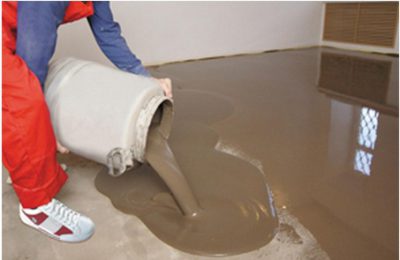
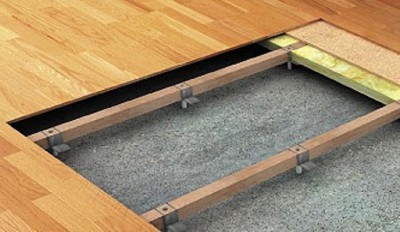
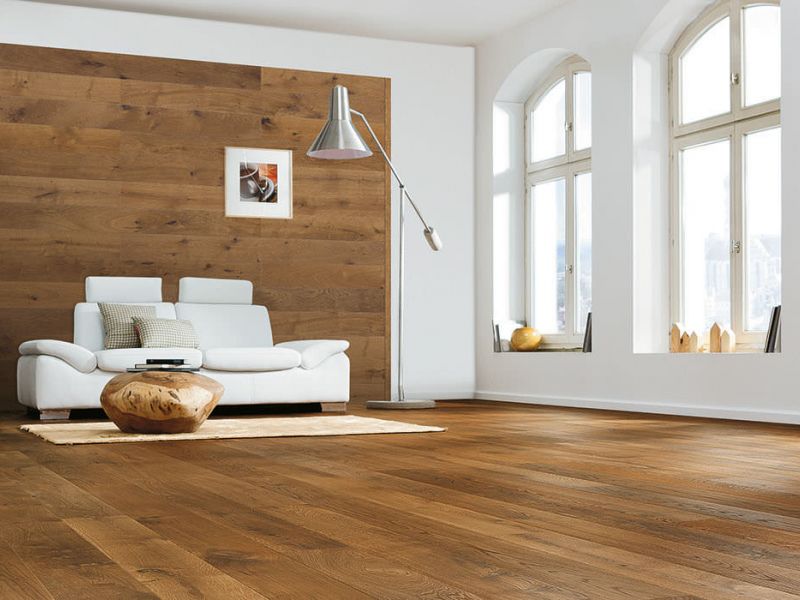
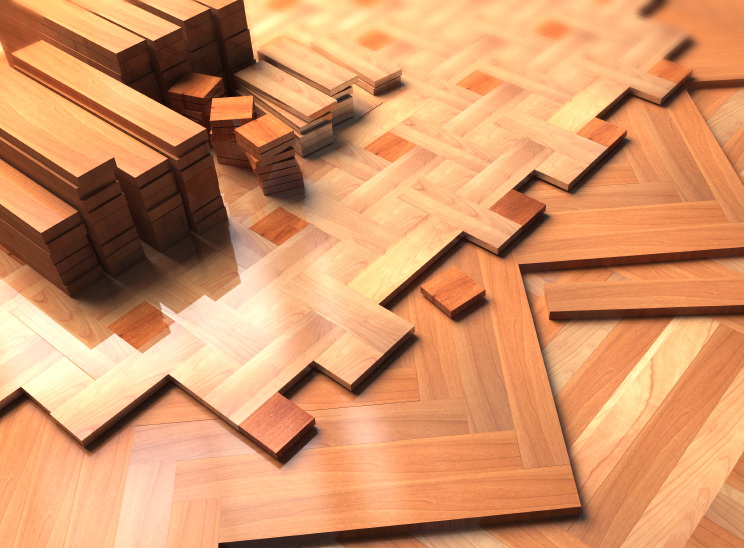
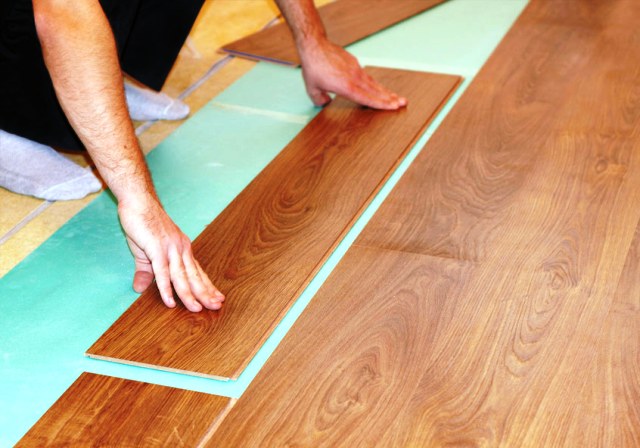
3 comments